Steven Gerrard to MLS: Ten things you should know about US soccer
- Published
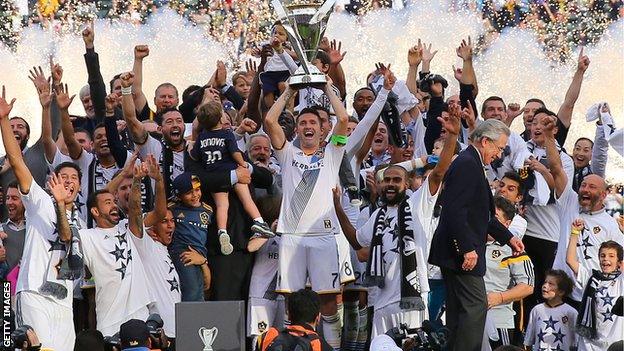
Republic of Ireland striker Robbie Keane helped Los Angeles Galaxy win the MLS Cup in December
Major League Soccer's popularity and quality is constantly increasing, with Steven Gerrard expected to join Robbie Keane, David Villa, Jermain Defoe and Clint Dempsey Stateside.
This is BBC Sport's 10-point guide to football/soccer in North America.
1. Michael Bradley earned more than Thierry Henry
US international Clint Dempsey was the highest paid player in MLS in 2014, earning £4.3m ($6.69m). Dempsey's countryman Michael Bradley was second at £4.2m ($6.5m). Four former Premier League stars were among the biggest earners in the league: Jermain Defoe, third, £4m ($6.18m); Robbie Keane, fifth, £2.9m ($4.5m); Thierry Henry, sixth, £2.8m ($4.35m); and Tim Cahill seventh, £2.3m ($3.63m).
At the other end of the scale, 54 players earned the league minimum of £23,800 ($36,500). The average MLS salary in 2014 was just under £137,700 ($208,000) - comparable to England's League One.
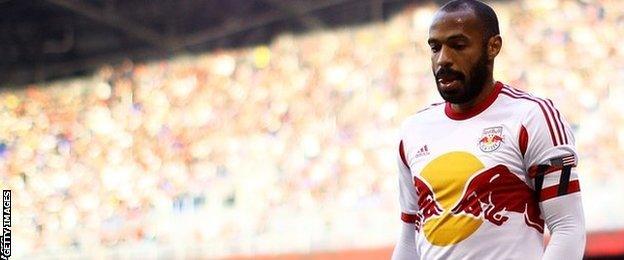
Thierry Henry headed to New York Red Bulls after leaving Barcelona in 2010
2. Sixty times more people watch the Super Bowl than the MLS final on TV
December's MLS Cup final - the championship match of the league - was watched by 1.9 million television viewers in the US. During the 2014 MLS campaign, the games broadcast nationally in the US on ESPN and ESPN2 drew an average audience of 240,000 viewers.
While television audiences are up significantly from 2013, they are still miniscule in the US sporting television landscape. In 2014, the NFL's Super Bowl drew an audience of 112 million, college basketball's national championship 21.2 million, and the final game of baseball's World Series 16.2 million.
3. MLS covers two countries
MLS serves as the top flight for two nations: the United States and Canada (England and Wales are separate countries for football but are both part of the United Kingdom politically). Toronto FC became the first Canadian club in the league in 2007. Vancouver Whitecaps followed in 2011 and Montreal Impact a year later. This precedent was set by the North American Soccer League of the 1960-80s, with clubs in five Canadian cities. Another part of the world where two nations are served by one senior division is the A-league of Australia and New Zealand which features Wellington Phoenix.
4. MLS is 20 years old
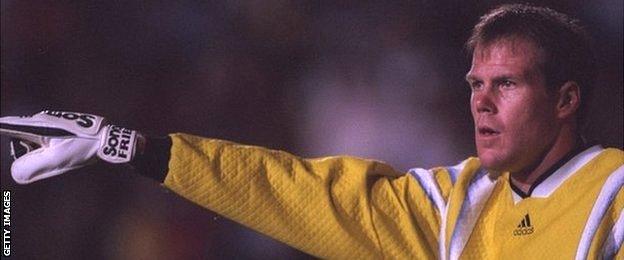
Brad Friedel played for Columbus Crew in the first ever MLS season, back in 1996
Major League Soccer (MLS) will mark its 20th season when the new campaign opens in March. The league was officially formed in 1995 and began the following year, with the inaugural match taking place on 6 April 1996.
Prior to MLS, the US went 11 years without a first division, as the North American Soccer League had disbanded following the 1984 season.
5. MLS draws bigger crowds than Brazil
The 2014 MLS season saw record crowds, with an average attendance of 19,151. The average crowd at a Premier League match in 2013-14 was 36,657.
The best supported MLS club in 2014 was Seattle Sounders, drawing an average of 43,734 spectators per match. In the football world, MLS ranked eighth in terms of crowds, ahead of first divisions in nations such as Brazil, Argentina, Portugal and Japan.
6. David Beckham has a rule named after him
MLS has a salary cap, which was £2m ($3.1m) per club in 2014. However, all clubs can also have three players they can pay as much as they want, and who are not part of the salary cap, under the Designated Player Rule.
Created in 2007 and known then unofficially as 'The Beckham Rule', this exception to the salary cap allows MLS clubs to attract - and pay - big-name stars from the US and overseas.

David Beckham won a league title in a third different country when LA Galaxy won the MLS Cup in 2011
7. You don't win the league by finishing top
MLS uses a play-off system to determine its champion, which occurs in the final match of the year, the MLS Cup. In the 2015 campaign, 12 of the 20 clubs will qualify for the play-offs - also known as the post-season. Finishing top of the table during the regular season earns a club the Supporters' Shield, and the top seed in the play-offs.
8. MLS fans don't like the cold
Rather than following the standard pattern for a season that begins in August and ends in May, MLS starts its new season in March (6 March in 2015), and finishes with the MLS Cup final in December. This schedule was put in place when MLS launched for two major reasons: the fear that US fans would not attend matches in the coldest months, and an attempt to stay clear of the end of the NFL and American college football seasons.
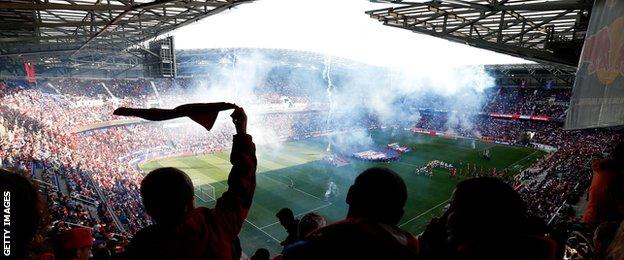
Since 1999, 12 new stadiums specifically designed for football have been built by MLS clubs
9. MLS teams play fewer league games than Premier League sides
In the 2015 season, all 20 MLS clubs will play 34 regular-season matches before the post-season of the play-offs and MLS Cup final. Premier League sides play 38 league games.
The 17 US-based MLS clubs also compete in the US Open Cup, while the three clubs based in Canada enter the Canadian Championship. On top of that, five MLS clubs, including a minimum of one from Canada, qualify for the Concacaf Champions League.
10. 'It costs $100m to become an MLS club'
With no system for promotion, MLS adds new clubs through the process of expansion. Currently, the expansion fee charged by MLS to enter the league as a new club is a reported £65.2m ($100m). In 2015, two expansion clubs will begin life: the Manchester City-backed New York City FC, and Orlando SC. MLS officials have stated their desire to grow the league to 24 clubs by the 2020 season.
- Published4 January 2015

- Published3 January 2015
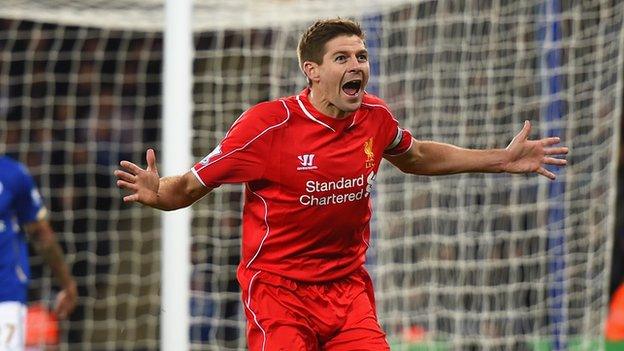
- Published2 January 2015
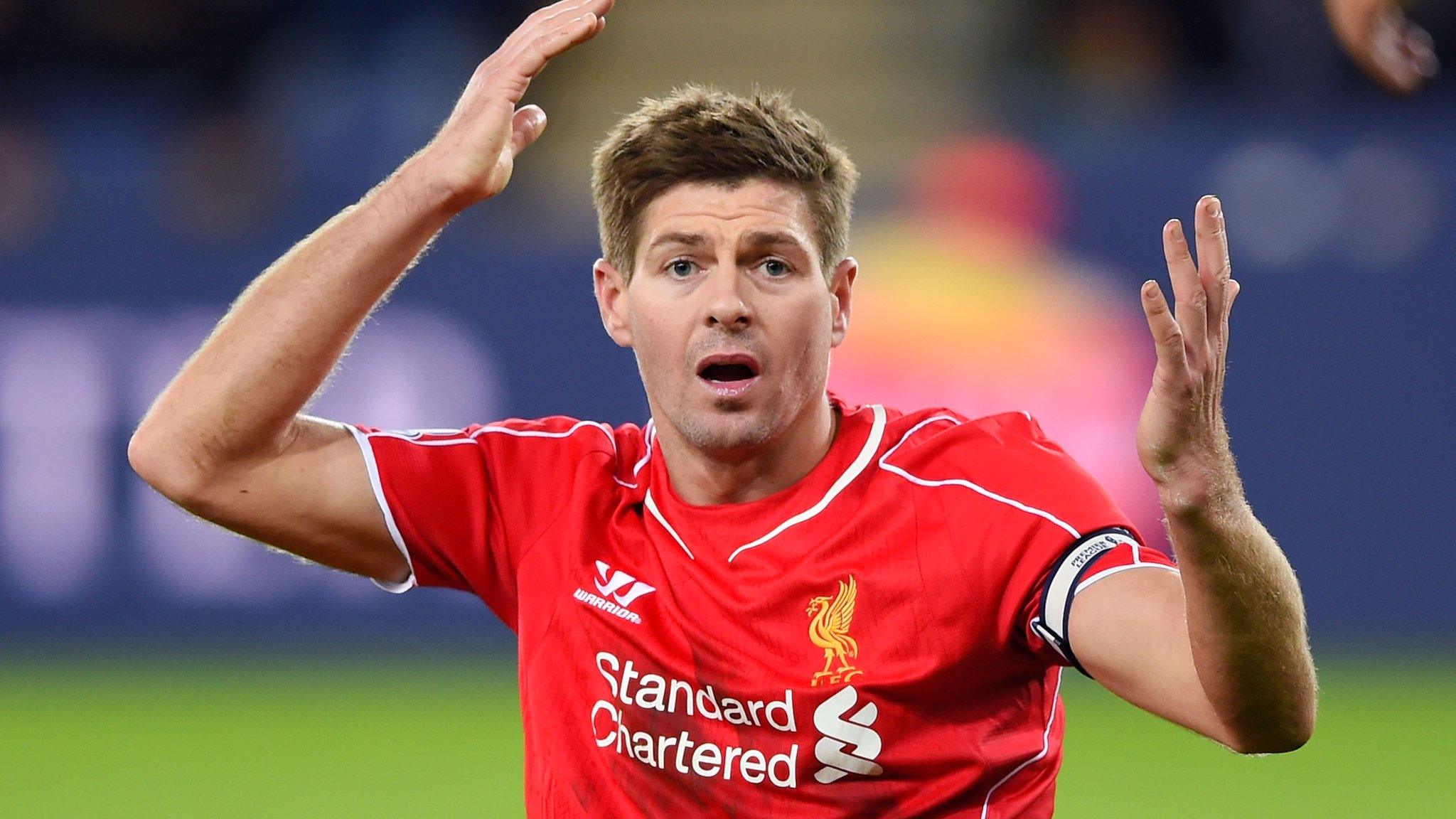
- Published21 May 2013

- Published2 December 2012
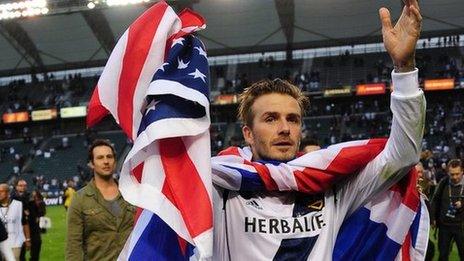
- Published10 November 2013
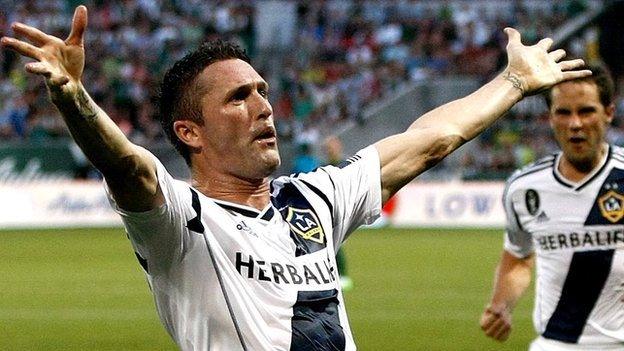
- Published20 June 2016

- Published7 June 2019

- Published2 November 2018
